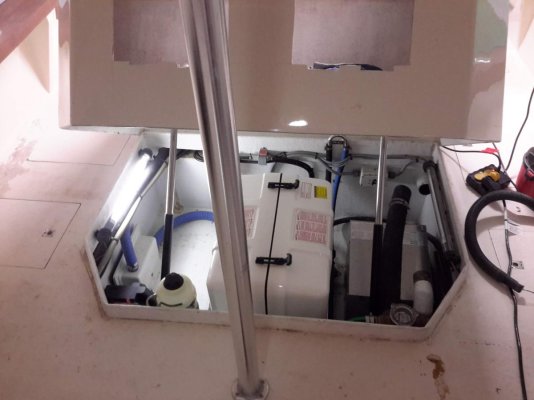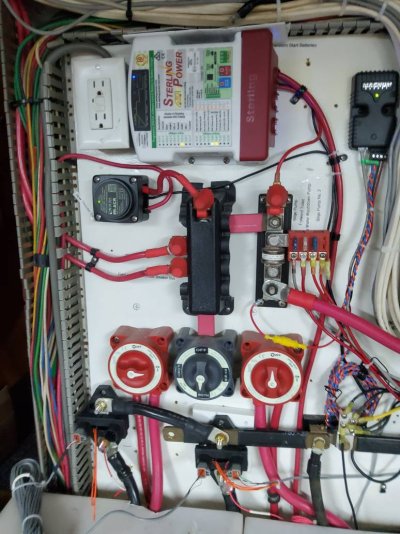REO
Veteran Member
We are converting an Albin 27 that is set up as a day trip dive boat to an overnight cruiser. The current battery set up is 2 12 volt deep cycle gel cel 100 amp batteries in parallel as house batteries, two 12 volt gel cel 100 amp starting batteries in parallel as a starting battery. The two banks are linked by a blue seas ACR rated at 120 amps. I am replacing the original engine with a Beta Marine with a 150 amp alternator. We have a generator with a 12 volt 100 amp battery. A 20 amp shore power charger also charges all batteries.
I am not a fan of ACR's. For many years we had a cruising sailboat with a 1000 amp hour main battery bank and a single Optima as a starting back up battery. We lived on the hook for months at a time (with refrigeration) and never needed the Optima back up. We just carefully monitored the batteries and charged when we got near 50%. We kept the Optima charged with an occasional use of a 1-2-both switch. It was a simple reliable system.
We will have to replace the ACR anyways because of the larger alternator, but I'm not sure I want that setup. I need some expert advice.
Space is limited, but we do have room in the generator room for a few more batteries. Can I just add some larger capacity batteries in parallel with the current house batteries, and replace the ACR with the larger capacity model? Does it matter if all the batteries in this bank are not the same? The existing house batteries are not the best deep discharge, and any new batteries will be better quality as well as larger capacity.
I had a really good experience with one big house battery that also started the engine and a little backup battery for emergency starting, but this will force me to do a complete rewire. Am I being too old school by not trusting the ACR system?
I know this is kind of throwing a lot of stuff out, but I need to make some changes and I am afraid that I don't know what I don't know.
I am not a fan of ACR's. For many years we had a cruising sailboat with a 1000 amp hour main battery bank and a single Optima as a starting back up battery. We lived on the hook for months at a time (with refrigeration) and never needed the Optima back up. We just carefully monitored the batteries and charged when we got near 50%. We kept the Optima charged with an occasional use of a 1-2-both switch. It was a simple reliable system.
We will have to replace the ACR anyways because of the larger alternator, but I'm not sure I want that setup. I need some expert advice.
Space is limited, but we do have room in the generator room for a few more batteries. Can I just add some larger capacity batteries in parallel with the current house batteries, and replace the ACR with the larger capacity model? Does it matter if all the batteries in this bank are not the same? The existing house batteries are not the best deep discharge, and any new batteries will be better quality as well as larger capacity.
I had a really good experience with one big house battery that also started the engine and a little backup battery for emergency starting, but this will force me to do a complete rewire. Am I being too old school by not trusting the ACR system?
I know this is kind of throwing a lot of stuff out, but I need to make some changes and I am afraid that I don't know what I don't know.


